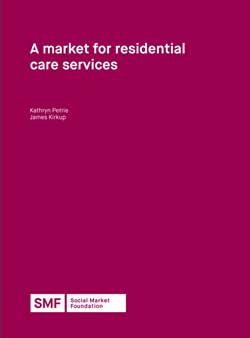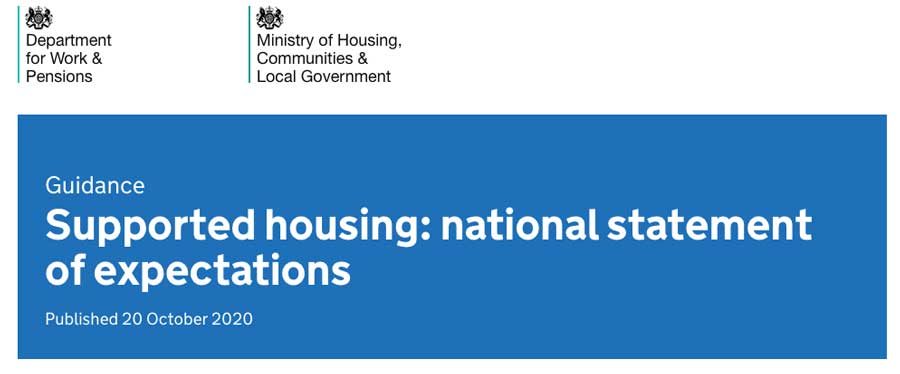New directions
Three recently published reports offer welcome fresh thinking on creating a sustainable future for the world of care and supported housing

STRATEGY
Image: Istock

Liz Zacharias
Senior consultant, Campbell Tickell
There has arguably never been a more important time in UK health and social care. While the COVID-19 pandemic continues, the recent publication of three reports could prove influential. So what did they say and what might their impact be?
1. Health and Social Care Committee
The recent Social Care: Funding and Workforce report by the Health and Social Care select committee of MPs recommends an additional £7 billion a year by 2023-24 is invested by the government. This will cover: demographic changes, uplift staff pay – in line with the National Minimum Wage – and protect people facing catastrophic social care costs.
The report also recommends a 10-year plan for social care to mirror the 10-year plan for the NHS. Access to free personal care, a proper training programme and career path for care staff and parity of esteem with health workers, are also key recommendations.
There is nothing to disagree with in any of the committee’s recommendations, and indeed Campbell Tickell’s ask of a new system outlined many of these back in July.
We can only hope that the government is now prepared to grasp the nettle and really look at what is needed for a humane 21st Century care framework for all citizens.
Another contribution to the debate on the future of social care is an interesting report released by the Social Market Foundation (SMF) in September, which looks at the residential care market. It recommends that an ‘independent body’ should be set up to oversee the residential care market, with a minimum of four main functions. These are to:
- Provide guidelines on funding – through national minimum costs and tariffs .
- Future-proof care – through demand forecasting on a local authority basis, and cost of care forecasting, to align spend to changes in the forecasts .
- Hold local authorities to account .
- Monitor levels of competition and market power – to ensure that markets are not concentrated in certain areas .
The report suggests that the above functions should fall within the Care Quality Commission’s remit.
The day before the SMF report was released, the Ministry of Housing, Communities and Local Government also published its long-awaited (since 2017 in fact!) National Statement of Expectations.
Having ploughed through the 40-odd pages, I can say that much of the guidance and recommendations are obvious and have been needed for a long time. There are also many interesting examples of good practice to give the document ‘weight’. The government is also looking to pilot the ‘expectations’ in five areas around the country.
Local authority partnerships
The most interesting guidance is around the expectation that local authorities and their partners should actively assess, plan and deliver supported housing, implementing oversight arrangements for doing so.
Additionally, local authorities should work with others to jointly commission services, in line with health and social care pathways, based on needs and supply assessments.
The guidance also aligns with the wider issues related to building health and safety, fire safety and accommodation quality, which have been issues in some exempt accommodation provision.
Rent and service charges
There is also an important section looking at rent and service charges. This urges local authority revenues and benefits departments – as well as commissioners – to share knowledge and data internally, and with neighbouring authorities. It suggests benchmarking the level of service required in different types of supported housing schemes and appropriate costs for rents and associated service charges that are claimed.
The report also proposes that councils consider using their existing powers – relating to housing, health and safety and housing benefit – to enforce minimum housing standards in supported housing, and to ensure housing costs are not excessive.
Finally, the report suggests the production of a database of supported housing provision that is available in each local authority, should be considered.
Impact and outcomes?
While all these suggestions and guidance are welcome, the important point is how great an impact they have on the current market. This is of particular interest around exempt accommodation, which many local authorities seem powerless to stop growing at a rapid rate.
Perhaps the guidance can give local authorities more licence to tackle exceedingly high rents, service charges and poor services for vulnerable people with more confidence.
When coupled with the recent enforcement activities that have been undertaken by the Regulator of Social Housing among some exempt accommodation providers, maybe we will see a fairer and better operating market for supported housing that aligns to needs and supply, providing value for money and good-quality accommodation. As a result, I will be closely monitoring the outcomes of the pilots.
One approach might be the introduction of a supported housing accreditation or licencing scheme, as we do with Houses in Multiple Occupation? Or perhaps the creation of a set of housing quality standards that are enforceable? Or maybe even an in-depth look at what is acceptable in terms of service charges for intensive housing management activities?
We will wait and see. In the meantime, as the need for housing support services seems set to continue rising, these three reports offer some good ideas on how the sector and its key players can evolve in response.





